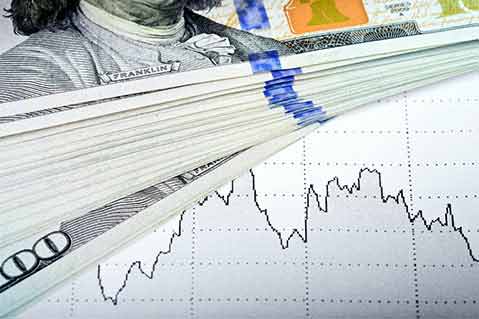News March 14, 2017
Strong U.S. Jobs Report Sets Stage for Interest Rate Hike
The Bureau of Labor Statistics announced Friday that the economy added 235,000 jobs in February, contributing to the unemployment rate dropping slightly to 4.7% from 4.8% in January, and from 4.9% year-over-year. The number of jobs added last month exceeded analysts’ expectations of 190,000 for February – a showing that will likely help influence the Federal Reserve to raise interest rates.

“It’s definitely a solid report,” Tara Sinclair, a George Washington University economist, told The Washington Post. “This is the kind of number that the Federal Reserve was looking to receive before their meetings.”
In February, the number of unemployed, at 7.5 million people, changed little from 7.6 million the month before. The labor force participation rate, which has steadily fallen since its high in 2000, remained stable in February at 63%. Meanwhile, average hourly wages rose 2.8% year-over-year. The industries that experienced the highest growth included educational services, healthcare, mining, manufacturing and construction.
At the next Fed meetings, planned for March 14 and 15, the central bank is expected to announce an increase of a quarter point in its benchmark interest rate. After the jobs data was released Friday, the likelihood that the Fed will do so rose to more than 90%, up from just 25% at the beginning of February.
The jobs report released Friday is the first to show the condition of the labor market under President Donald Trump. While the Trump administration’s promises to cut corporate taxes, reduce regulations and increase infrastructure spending have contributed to the stock market’s highs and heightened consumer confidence recently, other assurances in regards to halting federal hiring, reducing immigration levels and implementing increasingly protectionist trade policies could possibly offset growth. Moreover, analysts say the strong showing on jobs, while partly due to a “Trump bump,” is more likely the result of steady economic improvement over time.
“To the extent that businesses hire based on expectations of stronger demand, there is probably some linkage there,” Mark Hamrick, senior economic analyst for Bankrate.com, told The Washington Post. “What you really need to see are rising consumer and business spending. In terms of the sentiment, we’re going to have to see follow-through on things like tax reform and infrastructure spending for all of this to be sustainable.”
Also worth noting: The numbers from last Friday are largely based on the “U-3,” a metric that only measures the total number of people employed as compared to those unemployed but looking for work. The U-6 rate, by contrast, studies all unemployed persons, including those who have stopped looking for work, as well as employees working part-time “for economic reasons.” In a positive sign, the U-6 number fell slightly to 9.2% in February from 9.4% the previous month. Even so, while the U-3 has returned to prerecession levels over the past several months, the U-6 still remains higher than before the recession.
The U.S. economy has been growing for 94 straight months. Since the beginning of 2010, the economy has added about 16 million jobs.
